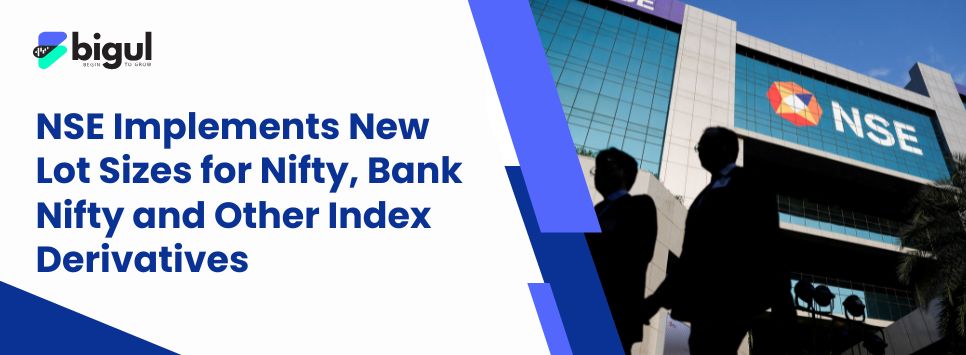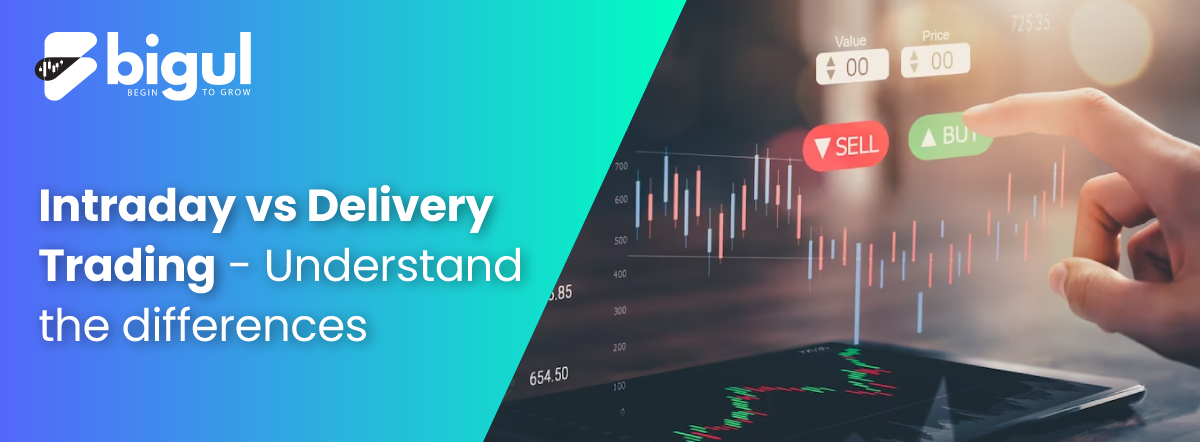Introduction:
Investing in the stock market has always been an excellent way to create wealth. However, with the advent of technology, it has become easier to trade in the stock market. Investors can now buy and sell shares online through various trading platforms. Two popular methods of trading are intraday trading and delivery trading. Let us discuss the two trading strategies and understand which is better for you.
What is Intraday Trading?
Intraday or day trading is a short-term strategy where traders buy and sell shares within the same day. Intraday trading aims to make quick profits by taking advantage of small price movements in the stock market. Intraday traders use technical analysis to identify trends and patterns in the market to make informed trading decisions.
What is Delivery Trading?
On the other hand, delivery trading is a long-term investment strategy where investors buy stocks and hold them for an extended period, usually for years. Delivery trading aims to create wealth over time by investing in fundamentally sound companies. Delivery traders use fundamental analysis to evaluate the financial health of companies and make informed investment decisions.
Trading Strategies
Intraday traders use various trading strategies to make quick profits. They rely heavily on technical analysis tools like charts, indicators, and oscillators to identify short-term price movements in the market. Intraday traders often leverage their positions to amplify their returns. However, this also increases their risk exposure.
On the other hand, delivery traders use fundamental analysis to evaluate a company’s intrinsic value. They look at the company’s financial statements, management team, competitive landscape, and growth prospects to make informed investment decisions. Delivery traders often follow a buy-and-hold strategy and do not engage in frequent trading. They are more concerned with the long-term growth potential of a company rather than short-term price movements.
Demat Account and Brokerage Charges
Both intraday and delivery traders require a demat account to sell and buy shares in the stock market. Intraday traders often engage in frequent trading and pay higher brokerage charges. On the other hand, delivery traders do not engage in frequent trading and pay lower brokerage charges.
Depository Participants
Intraday traders require a depository participant to hold their shares in electronic form. Delivery traders also require a depository participant to hold their shares. However, since delivery traders hold their shares for an extended period, they are not concerned about the short-term custody charges levied by the depository participant.
Online Trading
Both intraday and delivery traders can trade online through various trading platforms. Online trading has helped investors easily buy and sell shares from the comfort of their homes. It has also made trading more transparent, efficient, and cost-effective.
Differences between Intraday and Delivery Trading
Intraday and delivery trading are two popular trading strategies used in the stock market. The primary difference between these two trading strategies is the holding period of the shares. Intraday trading involves buying and selling shares within the same day, while delivery trading involves buying and holding shares for an extended period, usually for years. Here are some key differences between intraday and delivery trading:
Holding Period: The holding period is the primary difference between intraday and delivery trading. Intraday traders hold their shares for a few hours or minutes, while delivery traders hold their shares for an extended period, usually for years.
Trading Strategies: Intraday traders use technical analysis to identify short-term price movements in the market, while delivery traders use fundamental analysis to identify fundamentally sound companies.
Risk Exposure: Intraday traders have a higher risk exposure since they engage in frequent trading and leverage their positions to amplify their returns. Delivery traders have a lower risk exposure since they hold their shares for an extended period and are not concerned with short-term price movements.
Advantages and Disadvantages of Intraday Trading
Advantages
- Quick Profits: Intraday trading can be very lucrative and provide quick profits if done correctly.
- Flexibility: Intraday traders have the flexibility to enter and exit trades quickly.
- No Overnight Risk: Intraday traders do not hold positions overnight, which reduces the risk exposure.
Disadvantages
- High Risk: Intraday trading is a high-risk strategy requiring a good understanding of technical analysis.
- High Brokerage Charges: Intraday traders engage in frequent trading and pay higher brokerage charges.
- Emotional Trading: Intraday traders can be prone to emotional trading, leading to poor decision-making.
Advantages and Disadvantages of Delivery Trading
Advantages
- Long-Term Growth: Delivery trading is a long-term strategy focusing on long-term growth potential.
- Low Risk: Delivery trading has a lower risk exposure since investors hold their shares for an extended period and are not concerned with short-term price movements.
- Lower Brokerage Charges: Delivery traders do not engage in frequent trading and pay lower brokerage charges.
Disadvantages
- Slow Returns: Delivery trading is a slow and steady strategy, and returns may take years to materialise.
- No Quick Profits: Delivery traders cannot make quick profits and must wait for the company to grow.
- Overnight Risk: Delivery traders hold positions overnight and are exposed to overnight risk.
Intraday and delivery trading are two popular trading strategies used in the stock market. Intraday trading can be very lucrative but comes with high-risk exposure and high brokerage charges. Delivery trading is a long-term strategy focusing on long-term growth potential but with slower returns and overnight risk exposure. Long-time investors looking to create wealth over time often prefer delivery trading, while short-term traders looking to make quick profits often prefer intraday trading. Regardless of the trading strategy, doing due diligence, having a sound trading plan, and managing your risk effectively is essential.
Which One Should You Go For?
When choosing between long-term investment and intra-day trading, many market experts suggest that long-term investment provides better rewards. This is especially useful for individuals who have limited time to review their portfolios on a daily basis. On the other hand, intra-day trading may be suitable for individuals with a strong understanding of technical analysis and who can quickly analyse chart patterns.
It is crucial to have a sound understanding of either fundamental or technical analysis to avoid losses and potentially make a profit. Ultimately, choosing these two strategies depends on an individual’s preferences, risk appetite, and investment goals. Regardless of the approach, having a well-thought-out trading plan and managing risks is essential.




.jpg)





.jpg)
